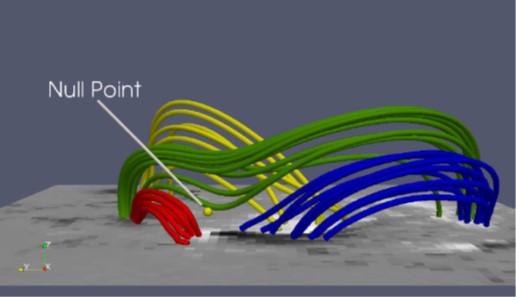Papers from SWICo members
Authors:
Paolo Romano, Abouazza Emhamdi, Ayman Kordi
Two strong homologous white light flares of X-GOES class occurred on the Sun on Sept. 06, 2017, providing a rare exceptional opportunity to study the mechanisms responsible for the formation of the magnetic field configurations suitable for the manifestation of such yet enigmatic eruptive events and their effects in the lower layers of the solar atmosphere.

Using photospheric vector magnetograms, taken before the beginning of the two X-class events, as boundary conditions to reconstruct the non−linear coronal magnetic field configuration, we identified two related 3D null points located at low heights above the photosphere (i.e. in very low corona). These null points are most likely responsible for the triggering of the two strong X-GOES class flares. We deduced that their formation at such low altitudes may plausibly be ascribed to the peculiar photospheric horizontal motions of the main magnetic structures of the hosting Active Region NOAA 12673.
These events can be adopted as a hint for a possible interpretation of the activity of young G-type stars, recently reported by the Kepler mission, and can shed light on the probability that superflares occur on our Sun.
Publication: Two Strong White-Light Solar Flares in AR NOAA 12673 as Potential Clues for Stellar Superflares, Solar Physics, 294, 4, 2019
https://link.springer.com/article/10.1007/s11207-018-1388-0
